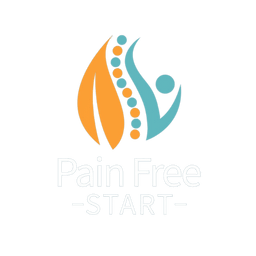Introduction
Ideally, we’d all avoid injuries like ankle sprains, knee sprains, or muscle pulls. But in reality, musculoskeletal injuries are part of everyday life. With so much conflicting advice, it’s hard to know what’s best. We’ve examined the latest research and combined it with years of clinical experience to bring you a clear guide on what to do when things go wrong.
RICE, PRICE… and Now POLICE!
Over the years, the treatment of musculoskeletal injuries has evolved. We moved from RICE (Rest, Ice, Compression, Elevation) to RICER (Rest, Ice, Compression, Elevation, Rehab), then PRICE (Protection, Rest, Ice, Compression, Elevation). Now, research (Bleakley, Glasgow & MacAuley, 2011) supports the POLICE method: Protection, Optimal Loading, Ice, Compression, and Elevation—the gold standard for managing acute soft tissue injuries.
Let’s break it down and see how to apply it effectively.
Protection
The first step is to avoid further damage to ligaments, tendons, or muscles. If moving or weight-bearing causes excessive pain, unload the area and rest for 24–48 hours. However, this doesn’t mean complete immobilisation. For lower limb injuries, using crutches can help you stay mobile without worsening the injury.
Optimal Loading – Not Rest!
Replacing prolonged rest with gentle movement is key. Once pain allows, gradually introduce movement and a rehab program to restore function. This may include range-of-motion exercises, stretching, and massage.
Why is this important? Research (Glasgow, Phillips & Bleakley, 2015) shows that bone, tendon, ligament, and muscle healing are stimulated by controlled loading. The challenge is finding the right balance. A knowledgeable clinician can guide you to avoid re-injury while preventing the complications of prolonged rest, such as stiffness and muscle deconditioning (Wang ZR, Ni Gx, 2021).

Ice, Compression & Elevation
While more studies are needed, ice, compression, and elevation remain core elements of injury management:
- Ice: Apply an ice pack wrapped in a damp towel for 10–20 minutes every two hours during the first 24–48 hours. This helps with pain relief and reducing swelling.
- Compression: Use an elastic bandage (e.g., tubigrip) to control excess swelling.
- Elevation: Keep the injured area above heart level if possible, which can help minimise swelling and stiffness.
Conclusion
The best way to manage injuries is to prevent them through targeted strength and mobility training. But when sprains or strains happen, the POLICE method (Protect, Optimal Loading, Ice, Compression, Elevation) is the best approach.
One major shift from the older RICE method is the removal of prolonged rest. While rest is necessary in the early phase, too much rest can delay recovery. Instead, gradual movement and optimal loading are now essential for healing.
Take Care, Helen
Helen Manders BSc(Hons) MCSP HCPC
Chartered Physiotherapist Since 2001
P.S. Don’t forget I’m here if you need me. Learn more about how I can help you here.



